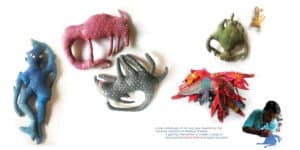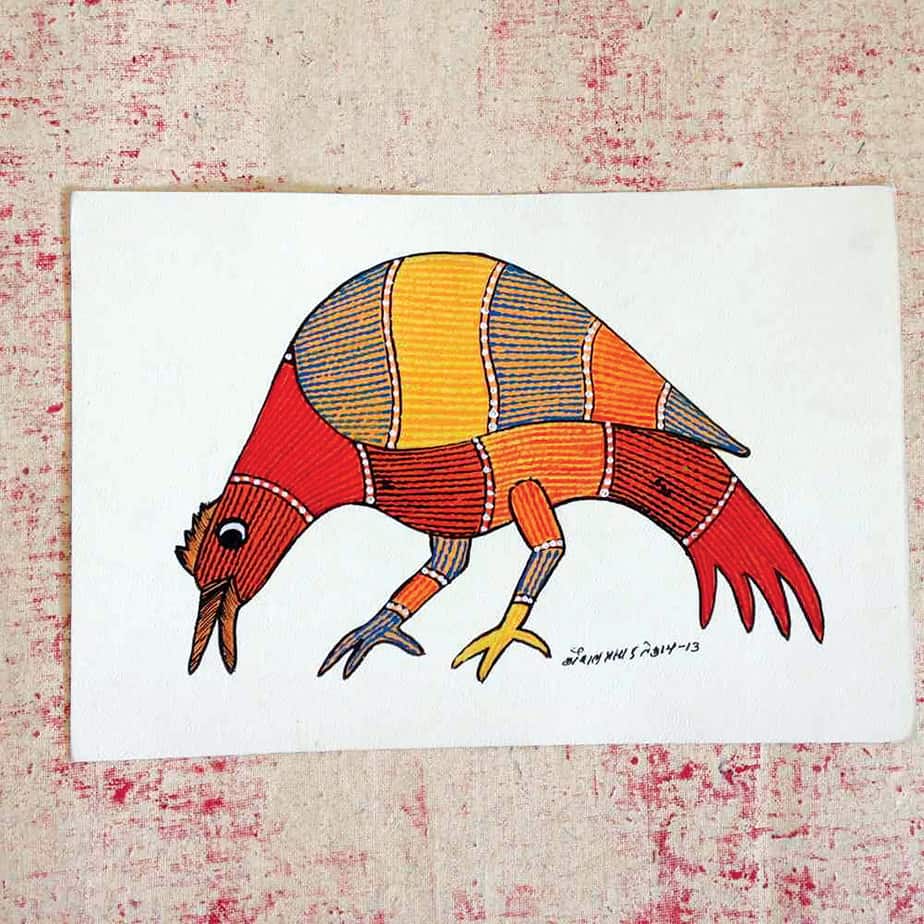Delhi’s ‘Jiyo’ exhibition showcases Gond art. Here, visitors get a chance to watch the artisans create unique pieces of artwork using indigenous techniques
Watching a bunch of craftsmen demonstrate their indigenous skills is a rarity in a city like Delhi. And to have an entire community of artisans from different parts of the country sit together and use their dexterous hands to create works of art out of age-old techniques, is still a dream for many of us.
But what is the idea of a craft? fashion designer Shweta Gupta recently told us that weaving textiles is a routine activity for many households in Chanderi village of Madhya Pradesh. Even the kids want to participate. Something that started as a hobby has become a pattern in the lives of many craftsmen. The slow pace of life in a village allows that. The craft gives them a chance to revisit the memories of ancestors and the stories told down the ages –– something that is dear to them.
Delhi has spaces like Delhi Haat where indigenous crafts are sold, but it’s a different experience altogether to watch these craftsmen work their magic with so much dedication.
To appreciate Gond art and the people who practise it, go to the ongoing exhibition ‘Jiyo’ curated by Asian Heritage Foundation (AHF) — an organisation helmed by Rajeev Sethi, scenographer and Padma Bhushan awardee.
The exhibition is designed in such a way that visitors get a chance to interact with the artisans — so that one becomes aware of the sheer volume of work and degree of artistry that goes into it.

As we enter the premises, a residential space in south Delhi, i.e. the AHF office, we see various artisans sitting in groups, carefully mounding and folding the material in their hands. A little walk inside this house, and we discover it is like a place flooded with art saved from India and abroad. We meet the Gond artists who had come all the way from Dindori, Madhya Pradesh to set up this workshop, so that city folks get a chance to learn more about their craft and its process.
“It is the stories about Gond kings and queens that we recreate on our canvas,” says an artist sitting within the group, eager to talk about their work.
The folk and tribal art of Gonds is a reflection of man’s close connection with his natural surroundings. The belief among the Gonds is that all things have a spirit of their own and these drawings celebrate the sacredness of it.
Stories are built around drawings of motifs like birds, fishes and trees —these artworks convey a sense of motion in still images. Bright colours add the contrast that life in a village has with that of a city.
Santosh Uikey, a Gond artist, tells us how they make dolls utilising the native technique which is essentially a two-dimensional art form. “Tahir Sultan, a doll maker from Dubai collaborated with us in this. It was made possible through the efforts made by Jiyo,” says Uikey. It was the doll maker’s patterns that they drew on.
Uikey, who is ready to head back to his village in a few days, shares vignettes about his life there. “I have a friend from Japan, Yonchi Yamagata, who comes and lives with us. He is a sculptor and loves to work in our village,” he says. As someone who learnt it all from Mayank Shyam — son of Jangan Singh Shyam — an international Gond artist, Uikey started with first making the natural colours for the artwork.
“Initially we used natural dyes but times have changed and people demand acrylic colours which are fast,” says Uikey. He has been working for 10 years as a Gond artist and considers Mayank Shyam his guru. He believes that these collaborations with designers have helped his community grow and become more financially stable. “I wanted to meet Rajiv ji since I had heard so much about him, and finally I got the opportunity to meet him. I am happy about it”, adds Uikey. He is all set to travel to Goa for Geentanjali Taras Mela that he has been invited to exhibit at.
Jiyo, an initiative that gets its funding from World Bank, has been organising workshops for Gond artists for the last one and a half years. But not many orders have been coming in, irrespective of the elaborate work and new design inputs in their craft. “We are hopeful that someday, we do get some orders”, they affirm as a group.





